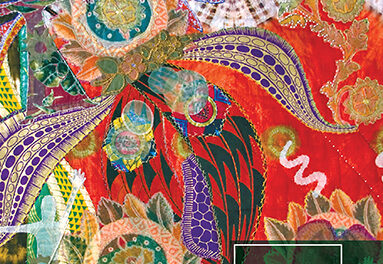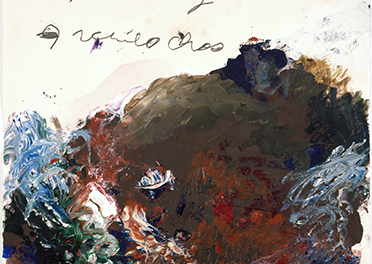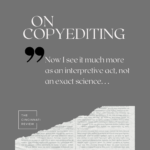And now for Part Deux of the exchange between Carl Phillips—on his poem “Hold Tight”—and Bruce Snider—on “Creation Myth”—both published in CR 11.1. Happy reading!
Carl Phillips: Your poem works largely by juxtaposition, the largeness of an Indiana dusk, next to the specificity of Aunt Bev’s crocheted oven mitt, moths beside meth labs, a lynching one moment, aphids on honeysuckle the next. Could you speak to your choice of this strategy and how it works as narrative device?
Bruce Snider: That’s an interesting question, and one I didn’t really consider while composing. It’s definitely true that I’ve always been drawn to narrative, but my own storytelling instincts (shaped, in part, I suspect, by wonderfully bad ’80s television) are very linear. Over the years, I’ve tried to find ways to resist or at least complicate that linearity. I guess juxtaposition is one way for me to do that, especially when paired with anaphora, because the latter allows you to move through time and space quickly and seamlessly, creating the cohesion that in turn allows for the more disruptive effects of the juxtaposed elements. In the end, I suspect the real power of much juxtaposition comes from what’s been left out. Between the “Indiana dusk” and “Aunt Bev’s crocheted oven mitt,” for example, there’s so much that could be included, but the poem doesn’t go there. And one thing I’ve learned is that good storytelling is as much about what you leave out as what you put in.
CP: Given the statement about being a child of form, toward the poem’s end, how does form work for you in this poem? I note, for example, the rhyme that closes the poem, between form and worm, and the way in which it brings to mind the sonic closure of an English sonnet; meanwhile, the poem is also very invested in anaphora as rhetorical device. . . .
BS: I wrote the early drafts of this poem by simply following the sounds of the language as much as I could, letting the textures of sound suggest the textures of image and idea. You can probably see that most clearly in the move from “moths” to “meth,” “honeysuckle” to “yolks flecked,” and at the end when “gasket ring” leads to “disenchanted thing,” etc. The poem’s sonic closure, though, was something I was a bit more conscious of, since from the beginning I think I had some sense that this was a poem about form—bodily, intellectual, historical—though I couldn’t anticipate how that would play out. Of everything in the poem, I most remember writing the final lines, and when “form” led to “worm,” the sonic rightness of the rhyme paired with the unsettling logic of the meaning, and I found myself thinking of Louise Glück’s line, “A love of form is a love of endings.” In this case, of course, worm suggested the ultimate ending.
 CP: Your image of the uncut grass immediately brought to mind Whitman’s description of grass as “the beautiful uncut hair of graves.” Was Whitman an influence on this poem, and in what way—or if not, who would you say might be some of the ancestors behind this poem that seems very much to concern ancestry, even as it enacts the creation of a self through its assembling of influences?
CP: Your image of the uncut grass immediately brought to mind Whitman’s description of grass as “the beautiful uncut hair of graves.” Was Whitman an influence on this poem, and in what way—or if not, who would you say might be some of the ancestors behind this poem that seems very much to concern ancestry, even as it enacts the creation of a self through its assembling of influences?
BS: I’m sure Whitman is always hovering somewhere over my work. I can certainly see his influence in my use of anaphora, my listing of sensory detail, my indulgence in the textures of place. My “uncut grass” wasn’t a conscious reference to his work, but the grass section from “Song of Myself” is one of my favorite passages in all of poetry. And now that you point it out, I’m suddenly aware of how often grass appears in my poems. But I often envy Whitman his great surrender to excess. I feel bound by what I think of as a more modest midwestern temperament. As much as I’m drawn to the freedom and visionary qualities of Whitman’s work, I’m also drawn to the limiting aspects of form, and the wonderful tensions and discoveries that can result when you see a writer wrestling against it, like Donne in his “Holy Sonnets” (which actually also came to mind when I was reading “Hold Tight”) or Bishop in “Sestina” or “One Art”. In particular, Bishop has that remarkable control and precision, which runs counter to the strengths I associate with Whitman. In some ways, I suppose that in “Creation Myth,” as in much of my work, I felt pulled between those two sensibilities.










